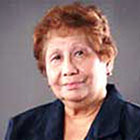LET’S discuss the when, who, what and why of comprehensive examinations. For purposes of our topic on comprehensive examinations, and to provide the context of our discussion, we begin by broadly defining a curriculum of degree programs as a systematic prescribed set of categories of courses with number of credit-units for a particular degree program. We shall use the term “course” with same meaning as “subject.” In Philippine universities, a course, particularly a lecture course in language and literature, arts or social science is usually equivalent to 3 credit-units (54 hours) while laboratory courses (eg physical and life sciences) usually consists of 5 credit-units broken down as 3 credit-units lecture and 2 credit-units laboratory.
The set of courses may be categorized into three, --- the foundation/core courses, 9 to 12 credit-units required for a masters degree and 12 to 15 credit-units, for a doctorate degree. Major courses of 18 to 21 credit-units for a masters and 21 to 24 for a doctorate compose the second category of courses. Free electives or cognates compose the third category. Free electives are courses not aligned to, while cognates support the major field of, the degree program. An example of a free elective is a music course enrolled in by a masters student in engineering management and a cognate could be a total quality system (TQS) course for a masters in nursing student, major in nursing administration services.
Continue reading with one of these options:
Ad-free access
P 80 per month
(billed annually at P 960)
- Unlimited ad-free access to website articles
- Limited offer: Subscribe today and get digital edition access for free (accessible with up to 3 devices)


